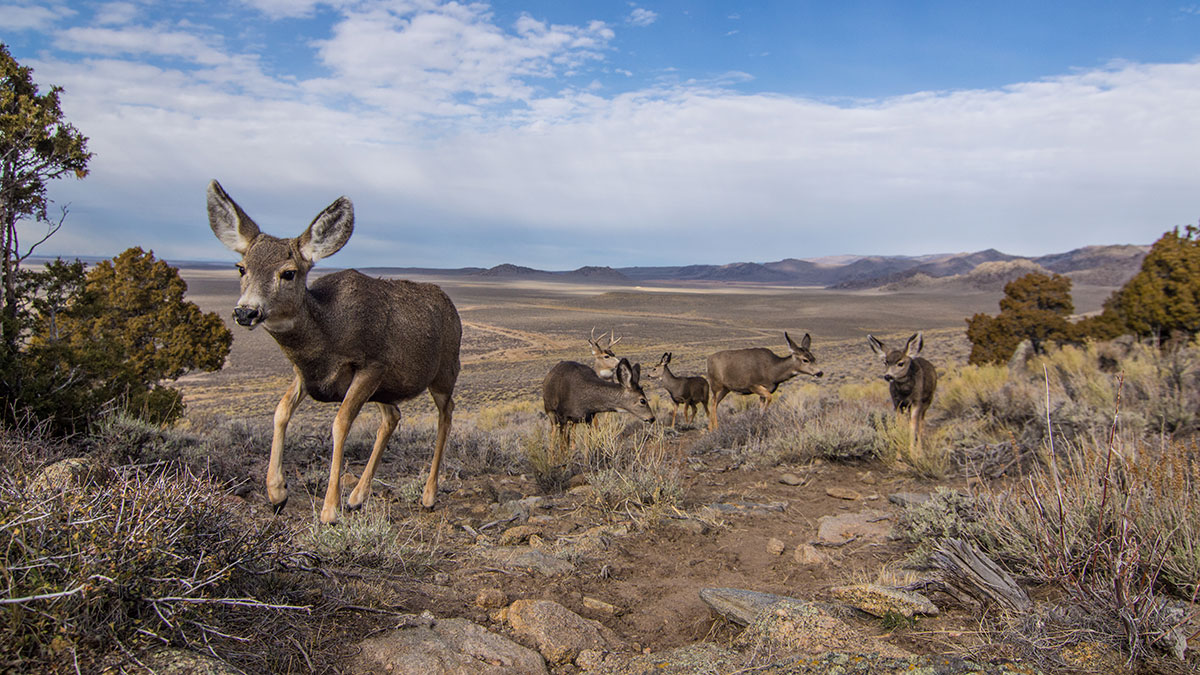New study reveals how fences hinder migratory wildlife in the West
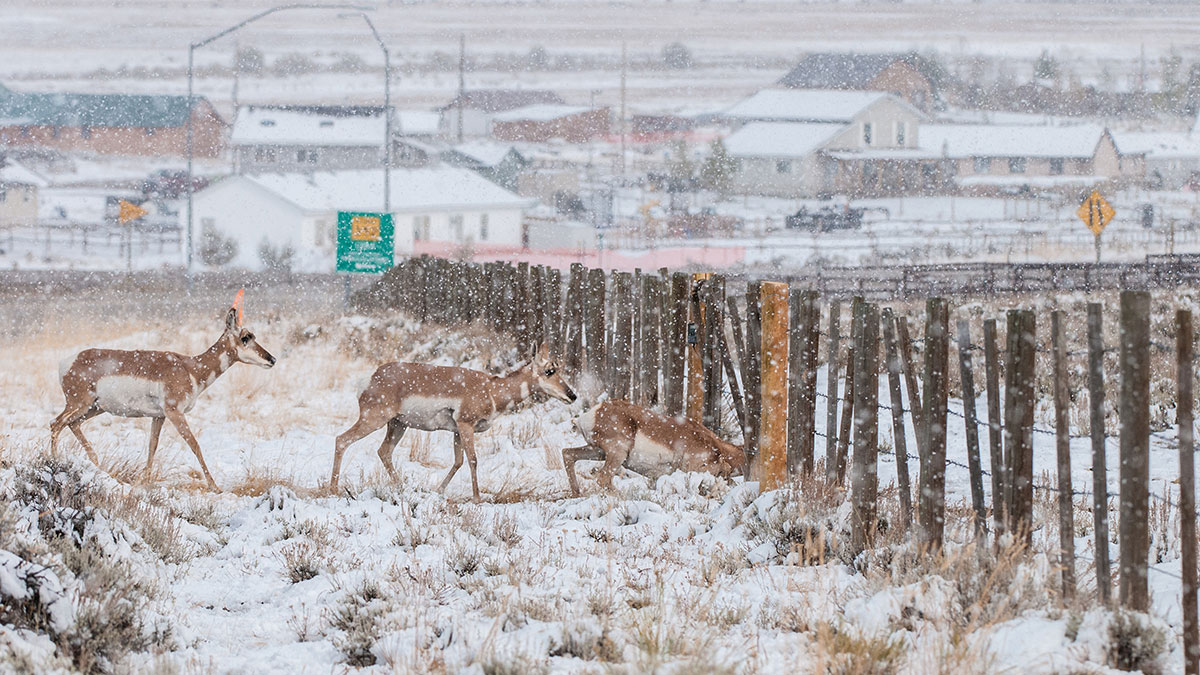
Each year, thousands of migratory mule deer and pronghorn antelope journey northwest from their winter homes in the Green River Basin, a grassland valley in western Wyoming, to their summer homes in the mountainous landscape near Grand Teton National Park.
But to reach their destination, these ungulates must successfully navigate the more than 6,000 kilometers (3,728 miles) of fencing that crisscrosses the region. That’s enough distance to span nearly twice the length of the U.S.-Mexico border.
In a new study, wildlife biologists at the University of California, Berkeley, combined GPS location data of tagged mule deer and pronghorn with satellite imagery of fences to find out just how often these animals encounter fences, and what happens when they do. The results, published on Jan. 7 in the Journal of Applied Ecology, help pinpoint which fences pose the biggest barrier to ungulates trying to access their ideal habitat.
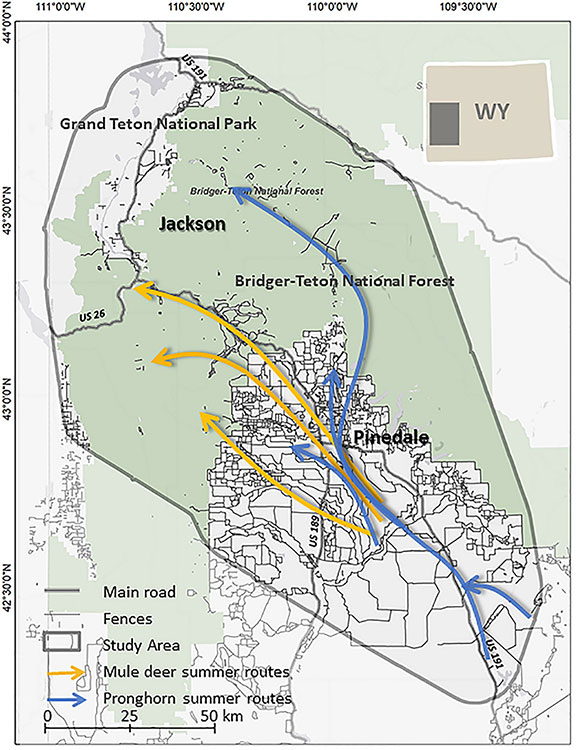
Along with the study, the team is also publishing a software package that will help wildlife managers around the world quickly analyze GPS tracking data to identify fences and other barriers that might be impeding the vital movements of animals.
“We need fences — they help keep livestock safe, can help keep livestock and wildlife separate, and mark property boundaries,” said Arthur Middleton, an assistant professor of wildlife management and policy at UC Berkeley and senior author of the paper. “So, the question becomes, how do you identify which fences are really important, and which are problematic from a wildlife standpoint, and then seek some way to mitigate the impacts?”
Fences don’t always pose an insurmountable barrier to wildlife, and different species find different ways to get around them. Mule deer are willing to jump over fences that are low enough. Pronghorn antelope, however, are reluctant to jump over fences and instead must seek out areas where they can move underneath.
Wenjing Xu, a Ph.D. student at UC Berkeley and lead author of the paper, took these different behaviors into account when creating the software package that compares animal tracking data with fence maps. The program can categorize different types of behaviors that animals might engage in when they encounter a fence, such as quickly crossing over the fence, pacing back and forth along the fence, or turning around and walking away from the fence.
To understand how fences are impacting mule deer and pronghorn, Xu started by painstakingly comparing fencing maps from the federal Bureau of Land Management and the U.S. Forest Service with satellite imagery, adding in fences that were not included in the government surveys. When all the fences were accounted for, Xu was surprised at the sheer amount of fencing in the region.
“The total length of fences is really, really striking, especially with what we know about the different types of wide-ranging animals that live in that area,” Xu said.
Xu then compared these maps to GPS tracking data that collected locations every two hours for 24 tagged female mule deer and 24 pronghorn antelope.
Each year, mule deer encountered fences an average of 119 times, Xu found. Pronghorn antelope encountered fences at more than twice that rate, about 248 times per year. About 40% of these fence encounters resulted in a change in the animals’ behavior.
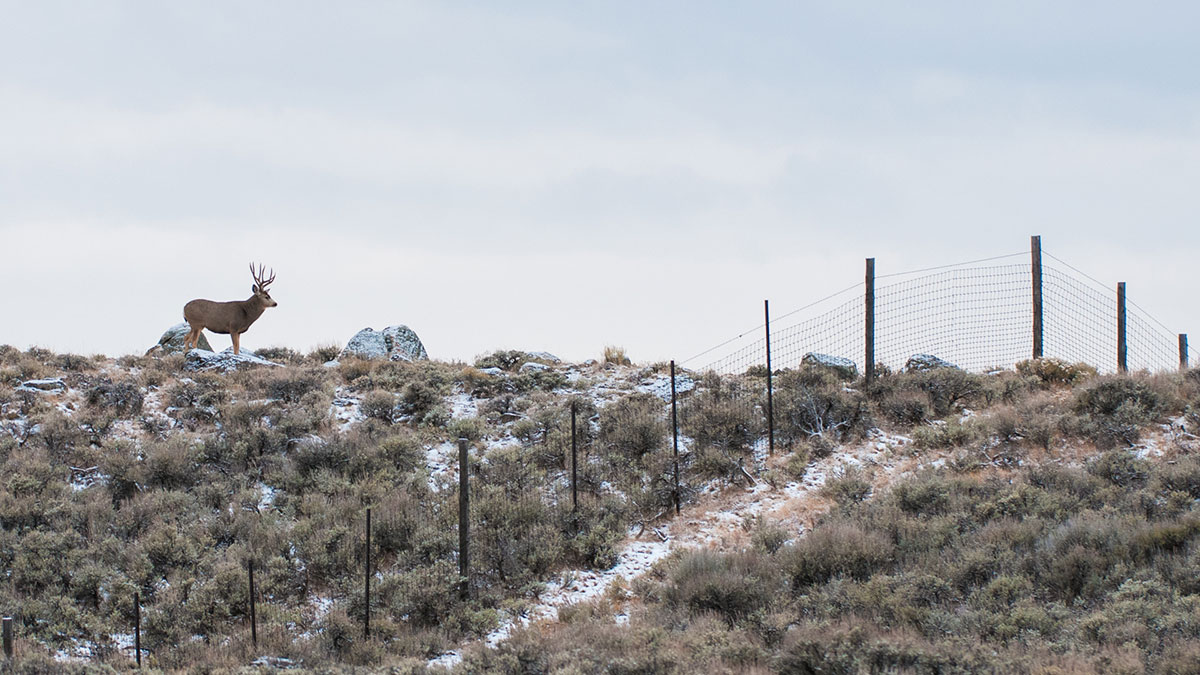
Anybody who’s spent time in the West knows you’ll find a lot of fences. But, seeing such frequent encounters, 40% of which result in a failure to cross, is kind of mind-blowing — especially when you multiply those numbers across whole populations and landscapes,” Middleton said.
Some of these fences are currently being used by ranchers to protect livestock or mark property lines. Others are relics of a bygone era when sheep farming was popular in the state, Middleton said.
The best way to mitigate the impact of these fences on animal migration is to remove them, or to replace them with more “wildlife-friendly” fences that mule deer can jump over or that pronghorn can duck under. However, both of these options require money and labor. According to Xu, a recent fencing modification project in Wyoming spent more than $10,000 per mile of fencing to make the fences more permeable to pronghorn.
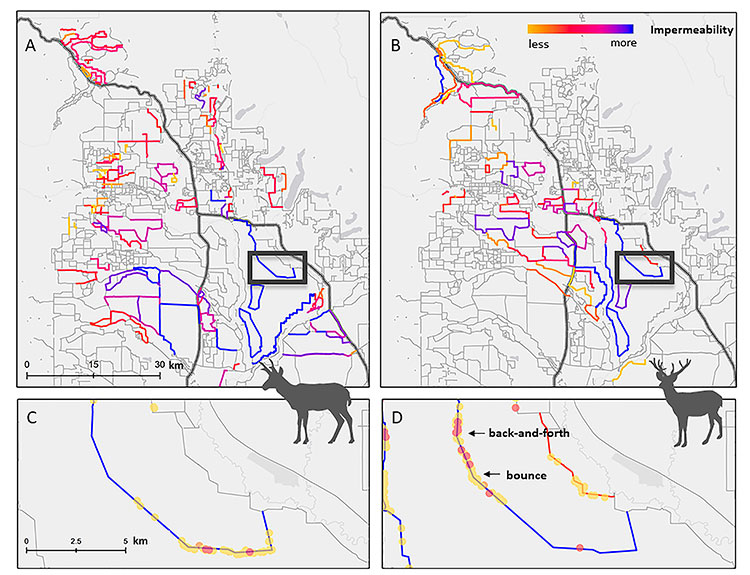
The software package developed by Xu is able to create maps that highlight the fences that pose the greatest impediment to animal movement, helping to prioritize fences to be modified or removed.
“There is such a strong need for this kind of data,” Xu said. “Modifying fences is really, really expensive, and the amount of fencing that might need to be fixed is just so large. [Wildlife managers] really want to find ways to prioritize their resources.”
Brandon Scurlock, a wildlife management coordinator for the Pinedale region of the Wyoming Game and Fish Department, is working to designate a protected migration “corridor” that connects the summer and winter ranges of pronghorn antelope in western Wyoming. Similar migration corridors for mule deer were established by the state earlier this year.
Scurlock’s team is already using the study results to identify fences that might create barriers along these routes, and prioritize those for modification.
“It’s been interesting noticing the characteristics of some of these fences that this study has pointed out as being not very permeable for Pronghorn,” said Scurlock, who was not a member of the study team. “We recommend the bottom wire of a fence be at least 18 inches above the ground. And, when looking at some of the particularly bad fences that that these methods highlight, we almost invariably see that they have barbed wires that are too close to the ground.”
One option for offsetting the cost of fence mitigation throughout this region, which is part of the Greater Yellowstone Ecosystem, could consist of imposing a small “conservation fee” on visitors to the area’s parks, which include the extremely popular Yellowstone National Park and Grand Teton National Park. Middleton and co-authors, including Berkeley Law professor Holly Doremus, explored the feasibility of this approach in a study published last month in the journal Conservation Science and Practice.
“Fine-scale movement data has helped us see much further into animals’ lives, including the challenges we’ve imposed,” Middleton said. “I hope this work helps open people’s eyes to the scale of fence effects. Our next steps are to better understand the actual biological cost that all these fence-related behavioral changes have on wildlife populations, and find ways to mitigate those effects at a really large scale.”
Other co-authors of the paper are Nandintsetseg Dejid of the Senckenberg Biodiversity and Climate Research Centre (SBiK-F) in Frankfurt, Germany; Valentine Herrmann of the Smithsonian Conversation Biology Institute; and Hall Sawyer of Western Ecosystems Technology Inc.
This research was supported by the National Geographic Society (Grant/Award Number WW-100C-1), the Buffalo Bill Center of the West, the William and Flora Hewlett Foundation and the Greater Yellowstone Coalition, the Knobloch Family Foundation, the Smithsonian Conservation Biology Institute, and the German Federal Ministry of Education and Research (Grant/Award Number BMBF01LC1820A).
